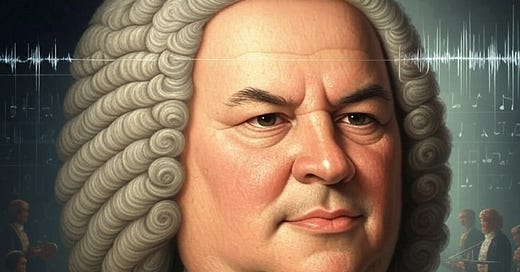AI Composes Bach: Can Machines Master Classical Form?
Can artificial intelligence truly grasp the soul of classical music, or is it just mimicking the masters? A look at machine-made compositions, the tech behind them, and what it means for creativity.
Few names in Western music conjure a sense of structural perfection and theological profundity like Johann Sebastian Bach. His fugues are not only exercises in counterpoint but windows into a musical logic so robust that it has become foundational for nearly all Western harmonic thinking. So when artificial intelligence systems began generating fugues and chorales that sounded convincingly like Bach, the music world took notice.
This development, while fascinating, invites deeper questions: can machines truly master classical form, with all its intellectual, emotional, and historical dimensions or are they merely simulating surface features, mistaking form for essence?
Formal Imitation, Neural Networks, and Bach’s Chorale Style
One of the most rigorously studied applications of AI in classical composition is DeepBach, developed by Gaëtan Hadjeres and François Pachet at Sony Computer Science Laboratories. The model uses a pseudo-Gibbs sampling strategy applied to a deep recurrent neural network, allowing it to generate four-part chorales with contextual awareness of harmonic and melodic voice-leading constraints. If you aren’t sure what a pseudo-Gibbs sampling strategy is, don’t worry, I didn’t either until I watched this YouTube video!
Trained on over 350 harmonized chorales from Bach’s Neumeister Collection and other sacred works, DeepBach does not sequence an entire chorale from start to finish. Instead, it generates individual notes iteratively, taking into account the temporal and harmonic context of every surrounding note, a method that allows for far more musically coherent results than traditional left-to-right generation.
In blind listening tests conducted by the research team, 50% of participants were unable to distinguish DeepBach’s outputs from authentic chorales. Among those with formal musical training, many described the AI compositions as “stylistically appropriate,” “idiomatic,” or even “genuinely moving.”
Yet the model’s strength is also its boundary: it succeeds precisely because Bach’s chorales conform to a constrained formal idiom. When AI ventures into less rule-governed territories, such as the organic unfolding of a Beethoven sonata or the dramatic architecture of a Mahler symphony, it quickly loses coherence.





